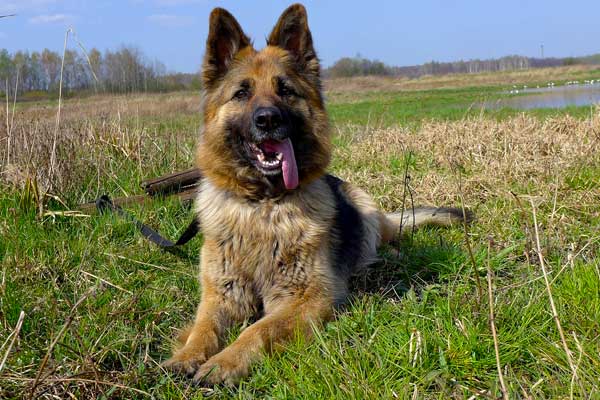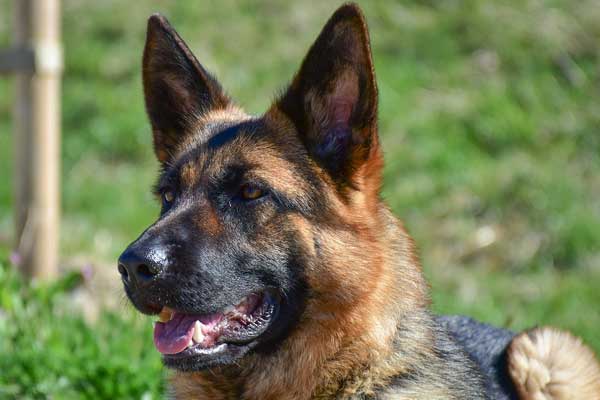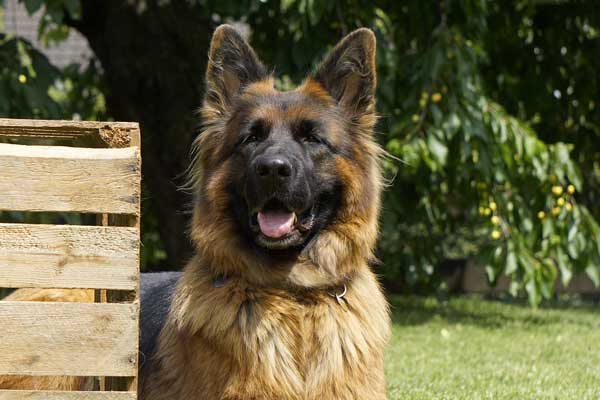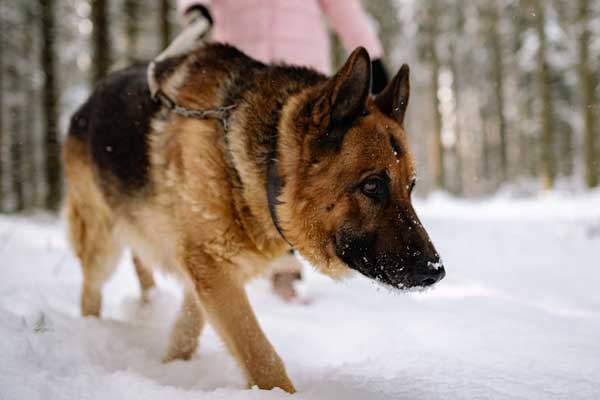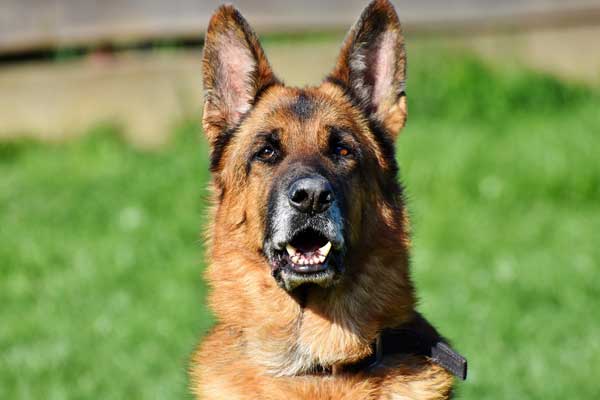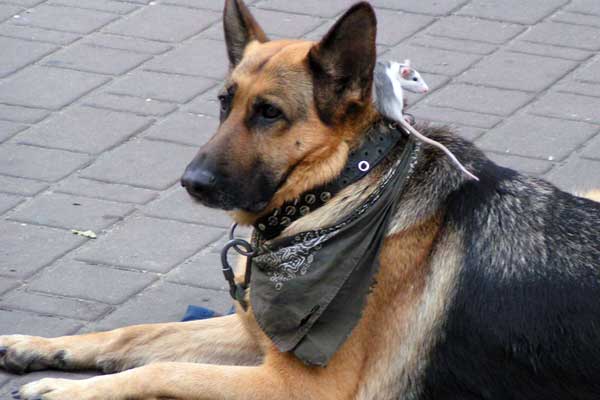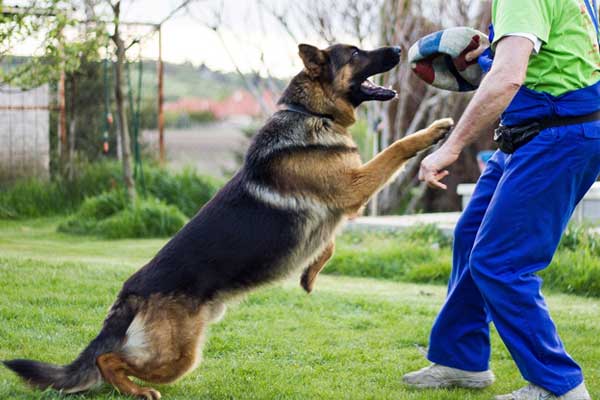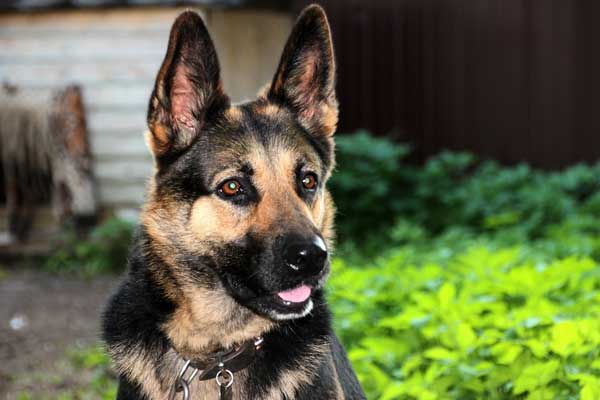German Shepherd Bite Force: Incredible Facts You Didn’t Know
Do you want to know how powerful a German Shepherd’s bite is? Many people are curious about the strength of this breed’s jaw, and rightly so. After all, if you bring one into your home, it’s essential to understand its capabilities.
The answer may surprise you: German Shepherds have a powerful bite force! They rank among the top dog breeds regarding sheer biting power. But what factors contribute to their impressive jaw strength? And why do some dogs bite more than others?
In this article, we’ll explore these questions in-depth and provide tips on how to avoid a German Shepherd bite.
We’ll also compare the biting power of other popular breeds so that you can decide which furry friend is suitable for your family. So let’s get started!
How Strong Is a German Shepherd’s Bite Force?
Have you ever wondered how strong a German Shepherd’s bite force is? The bite force is the amount of pressure a dog exerts with its jaws measured in pounds per square inch (PSI).
Knowing the bite force of your pup can help you determine whether it can perform specific tasks, such as herding or protection work.
The Average Bite Force of a German Shepherd
The average bite force for an adult German Shepherd is around 238 PSI, making them one of the strongest breeds regarding biting power.
However, remember that this number can vary depending on age and size, so it’s essential to measure the individual dog if you want an accurate reading.
It should also be noted that other breeds have higher PSIs than GSDs, such as Rottweilers (328 PSI) and Doberman Pinschers (245 PSI).
Measuring Bite Force
There are several ways to measure the bite force of a dog. The most common way is to use an electronic device called a “bite meter” that measures PSI.
This device can be used on any breed, from small lap dogs to large Mastiffs. Place this device between your thumb and index finger, and then have your pup bite it for about 10 seconds. The device will then give you an accurate reading of the PSI exerted by your pup’s jaw muscles.
The Anatomy of the German Shepherd Bite
The power behind the German Shepherd’s bite comes from its anatomy. Unlike other breeds, this breed has an undershot jaw which means the lower teeth are positioned slightly forward from the upper teeth when their mouth is closed.
This increases tension on whatever they are biting and increases leverage when they clamp hard on something. Their large head and muscular neck also add strength when they bite down on something.
Lastly, their strong back legs allow them to use their entire body weight while biting down on something or someone.
These anatomical features give this breed greater control over whatever they have in their mouths, which is why all German shepherd owners must train them with patience and care!
Is Your German Shepherd Prone to Lockjaw?
Lockjaw is a condition that affects some large-breed dogs and can cause them immense pain. One of the breeds that are more prone to this condition is the German Shepherd, along with some other popular family pets.
What Is Lockjaw?
Lockjaw, or masticatory myositis (MM), is an inflammatory muscle disease affecting the jaw muscles.
This painful condition causes the muscles to become inflamed and swollen, leading to jaw stiffness and difficulty opening and closing the mouth.
It’s most commonly seen in larger breeds such as German Shepherds, Labradors Retrievers, Golden Retrievers, Weimaraners, King Charles Cavaliers Spaniel, and several other large-breed dogs.
Symptoms of Lockjaw in German Shepherds
The symptoms of lockjaw vary from dog to dog but generally include swelling in the cheeks or around the eyes; difficulty eating; reluctance to have their face touched; pawing at their face; drooling; and facial swelling where there was none before.
If your German Shepherd displays any of these symptoms, you should immediately consult a vet for proper diagnosis and treatment.
Treatment Options for Lockjaw
Once your vet has diagnosed your pet with MM, they will likely prescribe anti-inflammatory medications to help reduce pain and swelling while allowing your pet to start moving its jaw again.
In addition to medications, physical therapy may be recommended along with diet modifications so they can eat more comfortably while they recover.
If left untreated, lockjaw can lead to further complications such as decreased range of motion in the jaw or difficulty breathing due to swelling near the windpipe. You must seek veterinary care immediately if you suspect your pet may be suffering from this condition.
Understanding and Avoiding German Shepherd Bites
It is essential to know the different triggers that can cause a German Shepherd to bite and how to avoid these situations.
German Shepherds Are Protective Dogs
German Shepherds are often used as guard dogs because they need to protect their family and territory.
They will not hesitate to use their teeth if they feel threatened or believe their family is being threatened means that it’s crucial for owners to properly train their German Shepherds so that they know when it is appropriate to use force, such as when protecting against an intruder or other threat.
Owners must also be aware of behaviors that could set off the dog’s protective instinct, such as movements or sounds that may appear threatening.
Avoiding Unfamiliar People and Animals
German Shepherds may also become aggressive towards unfamiliar people or animals if they feel threatened or scared by them.
Dog owners should always ensure their pet is socialized correctly to know how to interact with strangers without feeling frightened or defensive.
Additionally, owners should always be aware of their surroundings when walking with a German Shepherd and avoid situations where the dog may feel scared or threatened by another person or animal.
Instilling Positive Behaviors in Your Pet
Finally, positive reinforcement can go a long way in preventing your German Shepherd from biting.
Be sure to reward good behavior with treats and praise whenever possible while discouraging bad behavior with stern words and body language signals, such as turning away from the dog when it misbehaves.
Proper training will ensure that your pet responds positively in all situations – even those involving strangers – rather than resorting to aggression which may lead them to bite someone unintentionally.
Does Bite Force Make a Dog Dangerous?
Have you ever heard someone say that dog breeds with higher bite forces are more dangerous than those with lower bite forces? It’s an intriguing question that has been the source of much debate among dog owners, experts, and enthusiasts.
Do Bite Forces Affect Aggression?
The answer to this question is complicated. On the one hand, it makes sense that dogs with stronger bites would be more dangerous if they were to act aggressively toward people or other animals.
However, no scientific evidence links higher PSI directly to aggressive behavior in dogs. Many studies suggest that other factors play a larger role in determining whether or not a dog will act aggressively toward another living being.
Other Factors That Influence Dog Aggression
Breed-specific traits can influence aggression levels; for example, herding breeds may be more inclined to nip at people or animals due to their genetic makeup and history as working dogs.
Additionally, the environment influences aggressive behavior in all animals—including humans! Dogs who live in households where physical punishment is common may become fearful or react aggressively toward people because they associate them with pain or discomfort.
On the other hand, dogs who live in supportive homes with plenty of positive reinforcement are less likely to display aggressive behaviors.
Discover the Dog Breeds with the Strongest Bite Force
You may be surprised that some breeds can deliver a jaw pressure greater than a lion or a hyena. Here’s an overview of the top dog breeds with the strongest bite force.
German Shepherd Bite Force: 238 PSI
The German Shepherd is one of the world’s most popular and well-known breeds. This breed is ideal for police and military work due to its strength and natural protectiveness. They also have an impressively strong bite force of 238 PSI.
American Bulldog Bite Force: 305 PSI
The American Bulldog is another breed with a strong bite force at 305 PSI muscular build, and an energetic personality. They need lots of exercise and mental stimulation to stay healthy, making them great companion dogs who enjoy long walks, agility training, or even weight-pulling competitions.
Rottweiler Bite Force: 328 PSI
The Rottweiler is a large working dog known for their strength, loyalty, and protective nature. Their bite force measures 328 PSI, making this an ideal breed for police work and an excellent guard dog for families. The Rottweiler needs consistent training from an early age to provide proper guidance to develop into a well-rounded adult.
American Pit Bull Terrier – 240-330 PSI
American Pit Bull terriers are iconic dogs. Though this breed might have a bad rap, these pups are incredibly loyal and friendly. However, they have a mighty jaw capable of delivering up to 330 pounds per square inch (PSI). That’s around double the bite force exerted by humans! With proper training, this breed makes an excellent family pet.
Dogo Argentino – 500 PSI
The Dogo Argentino is a unique breed initially bred for hunting dangerous games such as boars and pumas in Argentina. This breed has a powerful jaw, capable of exerting 500 PSI of pressure!
It should be no surprise that they were chosen as guard dogs for livestock in their home country. While they can make great family pets if appropriately trained, they require plenty of exercise and socialization to ensure they don’t become aggressive or territorial.
Mastiff – 556 PSI
The Mastiff is a large dog with an intimidating presence. Despite their size, these gentle giants make surprisingly good family pets given the right environment and training!
They also boast an impressive bite force of 556 PSI—enough to make intruders think twice about entering your property! These pups are known for being loyal and even-tempered but will require plenty of exercises to stay happy and healthy.
Cane Corso – 650-700 PSI
The Corso’s bite force measures 650 and 700 pounds per square inch (PSI). That’s comparable to a Lion or Tiger! This breed is strong, muscular, and athletic, making it an excellent guard dog.
Despite its intimidating strength and size, the Cane Corso is known to be loyal and affectionate towards its family.
Turkish Kangal – 743 PSI
The Turkish Kangal is another formidable guard dog that can trace its lineage back thousands of years. This ancient breed is known for its loyalty and strength—they are massive in size, and their jaws can exert up to 743 PSI!
This makes them one of the strongest biting dog breeds out there; however, they can be pretty gentle if trained properly from puppyhood onward.
Conclusion
While a German Shepherd’s bite may not be as strong as some other breeds, they still have impressive biting power, averaging 238 PSI. Measuring your pup’s bite strength is crucial if you want to know exactly how powerful their jaw muscles are.
Knowing this information can help you determine what tasks or activities suit them based on their strength. All in all, understanding the power behind their jaws helps us better appreciate our furry friends!

